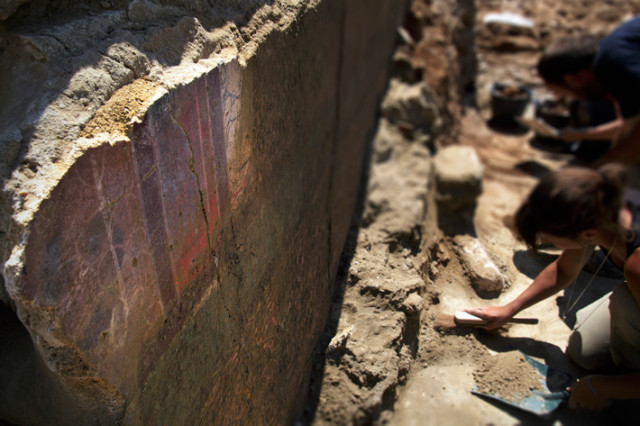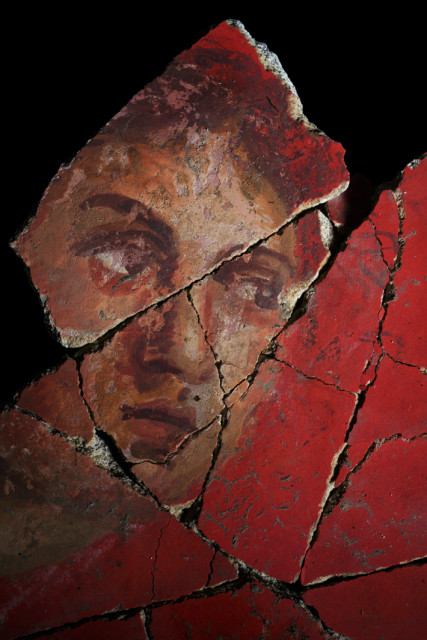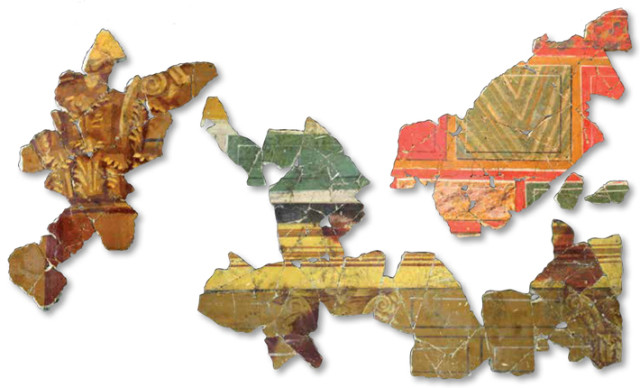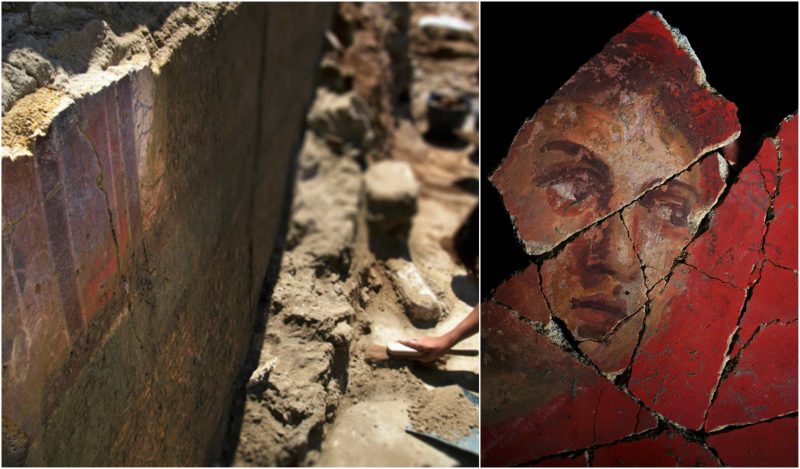Just recently, a house that dated back to the 1st century BC was excavated. What archaeologists found was quite incredible – a Roman fresco depicting a human figure on a vibrant red background.
Archaeologists believe that this is one of the highest-quality wall paintings ever found in what used to be ancient Gaul. Today, the Roman city is known as Arles, France. It was one of the most important ports during the later Roman Empire.
After the town sided with Julius Caesar during the civil war against Pompeii, the town had been formally established as a Roman colony for Caesar’s veterans between the years of 46 or 45 BC. The town was located on the Rhone River in southern Gaul. This allowed the town to become a major economic, political, and cultural area. In fact, it was referred to as the “little Rome of the Gauls” by the 4th-century poet Ausonius.

Today, the city’s bank is still strewn with artifacts and monuments left behind by the Roman settlement. On the bank, there is a theater, an amphitheater, baths, and even a circus. Before this settlement was found, experts believed the left bank had been far less developed, especially in the early Roman period.
By unveiling some of these parts of a wealthy Roman residential area, it provides experts with new evidence as well as uncovering some of the finest Roman wall paintings ever found in France.

This project was led by the Museum of Ancient Arles during a scheme to excava18th-century glassworks factory site in Trinquetaille district alongside Arles’ right bank. The glassworks site is a designated historic site and was acquired by the city in the late 1970s. During the 1980s, archaeologists were finally able to excavate the area. They found that some of the city had dated all the way back to the 2nd century AD. Underneath the factory there was a Roman residential neighborhood buried.
However, the excavation did not last long. In just the last two years, archaeologists made a plan to restore the site. The lead archaeologist, Marie-Pierre Rothe, said that the renewed excavation allowed researchers to dig deeper beneath the property to find some interesting pieces of history.
Beneath one Roman house that was originally discovered in the 1980’s, there is foundation that dates back to the first decades of the Roman colony. The researchers know that as the new colony had begun to grow, there was an influx of wealth into the city. This resulted in many opportunities for advancement for the locals and the new migrants.

Rothe said that one of their objectives is to get a better understanding of the development of the city, especially during the early period. For the longest time, researchers thought this area had been abandoned. The discovery of this home is incredible because it dates to a time when archaeologists believed the Trinquetaille area did not have any structures of this kind, let alone the remarkable paintings found in the houses.
The frescoes were designed in the Second Pompeiian Style according to August Mau’s 19th century documentation of the four major styles of Roman paintings. The second style of painting dates between the years of 70 and 20 BC and uses a more trompe l’oeil composition. These depicted architecture like columns, windows, and marble panels in order to create a three-dimensional look. Trompe l’oeil paintings are more common in Italy, especially in Pompeii, making these found in France even rarer. It is believed that there have only been 20 examples of these paintings found in France.
After excavating the site even more, the researchers uncovered the best in situ Second Style paintings in France. Thanks to the preservation of a five-foot tall Roman wall, the frescoes are still attached. Some of the frescoes still remain in situ, most of the painted plasters must be found from the debris to fill in what’s broken off. The archaeologists now have hundreds of fragments that need to be pieced back together.
While it will take years to piece the originals, replicas have been made for the time being.
